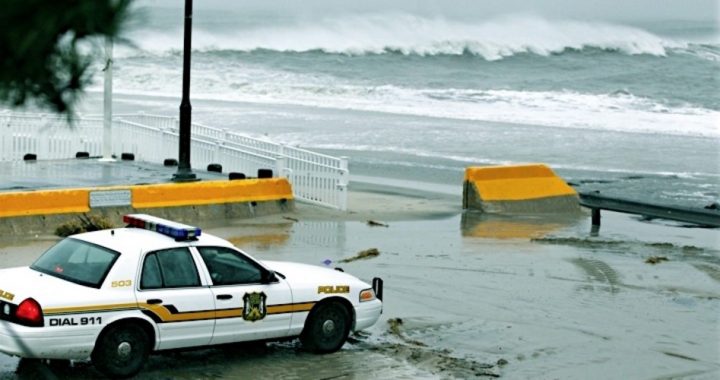
Hurricane Sandy is immense and could be the worst storm to hit the east coast of the US in 100 years, according to the Economic Collapse Blog (ECB). Michael, writing for the ECB, ticks off the remarkable impact the storm is having (or likely to have) on the 50 million residents living in the estimated impact area:
• Tropical storm winds are being felt more than 500 miles away from the center of the storm
• No reported storm recorded since 1988 has been larger than Sandy
• Nearly 10,000 flights have been canceled as a result of the storm
• New York City’s Mayor Bloomberg has ordered the evacuation of all residents living in Zone A (a high risk low-lying area in the city)
• The storm surge could be more than 15 feet above sea level in Zone A
• The city could experience winds of 80 mph or higher
• The city’s subway system is being shut down, and could be flooded by Sandy
• Schools as far away as Boston are closed
• The stock market is closed
• Some parts of Kentucky, West Virginia and North Carolina could get as much as two feet of snow
• Damage estimates by AccuWeather Enterprise Solutions is projecting that Sandy could result in $100 billion in damage, more costly than Hurricane Katrina
But the impact could determine the outcome of the election, according to Josh Vorhees, writing for Slate, a wholly-owned subsidiary of the establishment mouthpiece Washington Post. For one thing, it has turned the campaign schedules of the presidential candidates upside down, with Romney canceling key visits to swing states, and Obama flying back from Florida to the White House to give a press conference on Monday morning about the storm.
Vorhees noted that Sandy is giving President Obama “one final unscripted moment for a campaign that appeared to be largely in auto-drive into the final week.” Noting that, according to a study by two college professors, voters usually blame bad weather on the incumbent — bad news for Obama — the election is still the president’s to lose.
Acting presidential at his press conference, Obama was stern and sober: “This is going to be a big and powerful storm. When they tell you to evacuate, you need to evacuate.” When asked by a reporter if Sandy was going to have an impact on the election, Obama demurred, saying that his primary focus is on “saving lives” and keeping citizens safe.
The trouble facing Obama is that most voters by now have already made up their minds. Pollster Scott Rasmussen reported on Monday that 49 percent of voters are planning to vote for Romney next Tuesday, while 47 percent are going to vote for President Obama. That leaves just 4 percent and half of them are still undecided.
The president’s approval rating by Rasmussen is, according to Rasmussen, “one of the best indicators for assessing his chances of reelection.” He added:
Typically, the president’s job approval rating on Election Day will be close to the share of the vote he receives. Currently, 49% of voters say they at least somewhat approve of the president’s job performance. Fifty-one percent (51%) at least somewhat disapprove.
There’s another indicator that Rasmussen follows in tracking the contest: the president’s job approval rating. At present, according to his polls, “30% of the nation’s voters Strongly Approve of the way Obama is performing as president. Forty-two percent (42%) Strongly Disapprove, giving him a President Approval Index rating of -12. That number is close to where it was at the end of August while moving somewhat higher from where it was at the end of July. At no time since the first of the year has Obama’s rating been positive, and has at times hit -20.
What about the swing states that Sandy is threatening? According to Real Clear Politics, there are four toss-up states in Sandy’s path at present: North Carolina, Virginia, Pennsylvania and New Hampshire. Rasmussen’s Electoral College Scoreboard shows Romney ahead in three of them by between three and six percentage points, while Obama leads only in Pennsylvania with its 20 Electoral College (EC) votes, 51 to 46. If the election were held today, and if Rasmussen is right, North Carolina’s 15 EC votes, Virginia’s 13 EC votes and New Hampshire’s 4 EC votes — totaling 32 — would swamp (no pun intended) Pennsylvania’s 20.
At present voter momentum appears to be in Romney’s favor, Hurricane Sandy notwithstanding. Nearly all of the remaining few swing voters — the independents — appear to have made up their minds, and any change due to Sandy one way or the other is likely to have little impact next Tuesday.
Photo: A police officer watches from his patrol car as the rough Atlantic Ocean threatens streets, Oct. 29, 2012, in Cape May, N.J., as Hurricane Sandy continues toward landfall: AP Images



